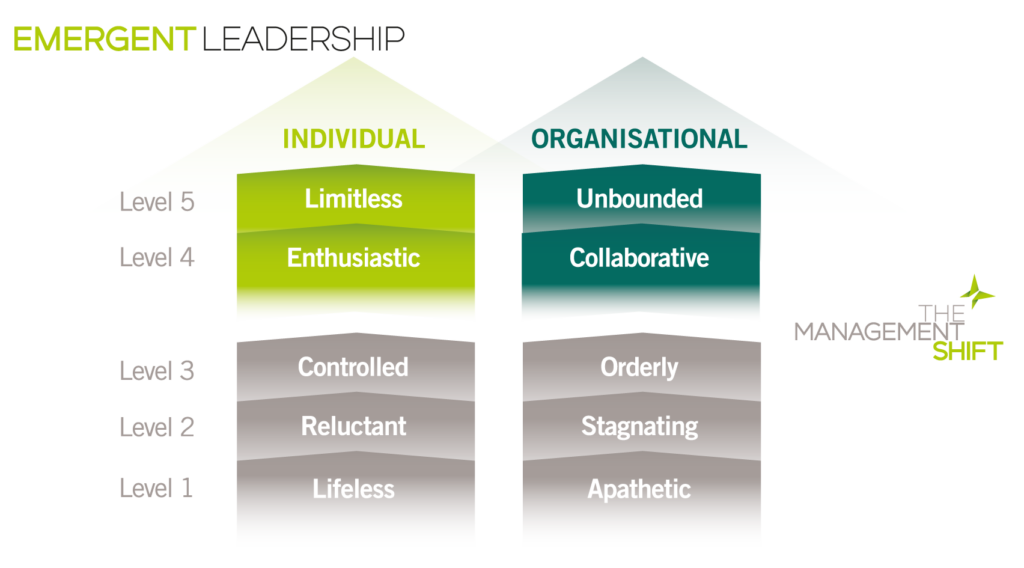Employee mindset shift: How SAP inspired its employees to innovate and achieve breakthrough by eliminating status quo and process
- 6 Min Read
Vlatka Ariaana Hlupic studies how SAP delivered an employee mindset shift using The Management Shift model. By doing so, the global software company took its sales teams from being stuck in terms of innovation and prohibited by process to delivering breakthroughs and engaging customers
- Author: Vlatka Ariaana Hlupic
- Date published: Dec 11, 2023
- Categories

In the face of global uncertainty and the seismic shift in the operating model of technology companies, SAP looked at a new approach to initiate an employee mindset shift. The aim was to think about business and their engagement with customers from a new perspective. They created an experimental lab scenario within two offices based in Japan and India and uncovered some surprising scenarios and results.
Even when given the freedom to step outside of the norm and to try something new, the foundation of their experience constrained the employees, as did the norms in a business with such a long history of operating in a particular way. The management team decided to create a step-change to open employee thinking to options beyond their learned behavior of what could be possible. They decided to apply The Management Shift (TMS) approach and model with their sales team in both locations.
Applying The Management Shift model
At first, SAP analyzed where each office sat within The Management Shift – 5 levels (Emergent Leadership) Model (Figure 1).
The Emergent Leadership Model (and Framework) is a tool that organizations can use to help leaders shift their thinking and improve their organizational outcomes. Years of research and use by thousands of leaders around the world inform this model.
The model consists of five levels, each consisting of specific thinking patterns, language use, leadership style, and organizational culture/outcomes. The five levels are:
- Lifeless/Apathetic: This is a toxic environment where fear, worry, and depression are common. Blame is common, and toxic leaders create toxic cultures.
- Reluctant/Stagnating: This is an environment where leaders are not inspirational, and people do the minimum they can get away with; they may go through the motions at work, but their heart and mind are not in it.
- Controlled/Orderly: This is a more compliant environment where people follow rules and comply with KPIs. However, big leaders with big egos may manage them.
- Enthusiastic/Collaborative: This is a more collaborative environment where performance, innovation, engagement, and profit improve substantially. Trust, transparency, purpose, collaboration, communities, creativity, resilience, and having fun working are important keywords at this level.
- Limitless/Unbounded: When individuals and organizations believe that anything is possible to achieve no matter what obstacles they need to overcome.
Figure 1:

Resistance to breakthrough thinking at SAP
To address these issues, several SAP leaders decided that The Management Shift was a necessary step change for these teams to shift their collective mindsets to a Level 4 standard. A collective and collaborative effort was required to achieve the desired results, and according to feedback obtained from leaders in charge of Labs, The Management Shift helped to achieve a breakthrough during this project. The leader described the step change as follows.
“In the second round, we were able to utilize the language of The Management Shift to challenge their approach by asking them to consider what Level of Thinking was evident in their solutions.
“We did not tell them what we had observed, but by utilizing this frame, they noticed that they were stuck at Level 3 and that to create a shift change they needed to consciously move to Level 4.
“Just by introducing this, they started changing the narrative and the way they were thinking and operating as a team. We were missing that input from the beginning, as it was a breakaway from the process-driven environment they were used to. It seemed to be too overwhelming to a certain extent and initially a return to what they were comfortable with. Once they understood this, then The Management Shift approach gave them a sense of next step, purpose, and direction.”
Language and understanding: The foundational framework for an employee mindset shift
SAP understood how important it was to lay the framework that can provide a new common language and understanding. The Labs created the opportunity for experimentation, but The Management Shift created a new paradigm that allowed them to break the barriers in their minds and to think beyond what they considered to be the only possibility.
One of the leaders in charge observed: “Because of what we have learned through the Labs, we have started expanding into other areas of our business. We are starting to see that by just getting that initial introduction, more and more of our teams started to talk in the language of The Management Shift.”
Another leader shared this experience: “Another good example was when I was in a meeting and I was conscious that the discussion was so clearly Level 3, and the topic required a Level 4 mindset. I wanted to figure out how we could lift the mindset of the meeting to level 4.
“As the other attendees had been introduced to The Management Shift, I was able to raise the consciousness by saying: ‘Let’s think about this. Is this a situation where we need to be lifting ourselves to Level 4? Because sometimes we know Level 3 is where we need to be, but having the power to raise it in this way can positively shift the outcome of a meeting.”
“The knowledge about TMS gives us that opportunity as people become familiar with TMS language to say, let’s just take stock. Are we at Level 3? And should we be at Level 4? I’m starting to see that more effective, casual conversations and meetings are starting to happen in our business because of these changes”.
In summary, as one of the leaders explained “status quo bias was blocking the ability to shift and break-through, people were stuck and The Management Shift enabled this awareness”.
Scaling employee mindset shift to other senior leaders
The key to SAP’s success in this Lab environment was about changing its employee mindsets and empowering its staff to become more collaborative and creative. The company was then able to engage its employees in the process, which resulted in greater buy-in from the employees involved and a more positive attitude toward change.
In the next stage of this initiative, SAP trained 50+ COOs and other senior leaders in The Management Shift approach, creating the opportunity for the TMS vocabulary to spread to other parts of the organization.
_____________
The Author would like to thank Cathy Ward, Jennifer Wright, and Axel Ferreyrolles for bringing The Management Shift approach to SAP and providing their input to this article.









